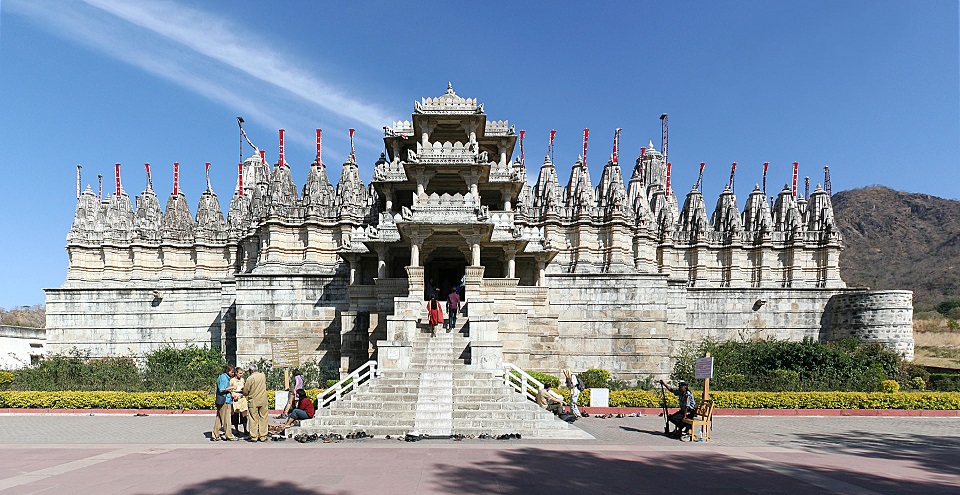
Ranakpur Jain Temples: A Spiritual and Architectural Marvel
Nestled in the serene Aravalli Hills of Rajasthan, the Ranakpur Jain Temples stand as a testament to the architectural brilliance and spiritual depth of Jainism. Known for their intricate carvings and grand design, these temples are a must-visit destination for history enthusiasts, architecture aficionados, and spiritual seekers alike. In this blog post, we’ll explore the rich history, architectural splendor, and spiritual significance of the Ranakpur Jain Temples, and offer practical information for planning your visit.
A Glimpse into History
1. Historical Background:
The Ranakpur Jain Temples, dedicated primarily to Lord Adinatha (Rishabhanatha), the first Tirthankara in Jainism, were constructed during the reign of Rana Kumbha of the Mewar dynasty in the 15th century. The temples were built by a wealthy Jain merchant named Dhanna Shah, and their construction reflects the flourishing of Jain art and culture during this period. The complex is a significant pilgrimage site for Jains and has been an important center of worship and learning.
2. Legends and Significance:
According to local legends, the site of Ranakpur was chosen after a divine vision, and the temples were designed with divine guidance. The intricate carvings and architectural design are believed to embody the principles of Jainism, emphasizing non-violence, truth, and asceticism.
Architectural Splendor
1. Temple Complex:
The Ranakpur Jain Temple complex consists of several temples, with the main temple being the Chaturmukha (Four-Faced) Jain Temple. The complex includes the Adinatha Temple, dedicated to Lord Adinatha, and several smaller temples dedicated to various Tirthankaras.
2. Intricate Carvings:
The architectural marvel of Ranakpur lies in its stunning carvings and intricate details. The main temple is renowned for its 1,444 exquisitely carved marble pillars, each uniquely adorned with elaborate designs. The temple’s ceilings and walls are adorned with intricate motifs depicting various scenes from Jain cosmology and mythology.
3. Layout and Design:
The Ranakpur Jain Temple is known for its complex and unique layout. The temple is built in a grand style with a central dome and four subsidiary shrines, symbolizing the four cardinal directions. The overall design is a harmonious blend of symmetry and intricate artistry, reflecting the advanced craftsmanship of the period.
Spiritual Significance
1. Jain Philosophy:
The Ranakpur Jain Temples are a reflection of Jain philosophy, emphasizing non-violence (Ahimsa), truth (Satya), and renunciation (Aparigraha). The temples serve as a place of worship, meditation, and spiritual reflection for Jains and visitors from all walks of life.
2. Pilgrimage Site:
The temples are an important pilgrimage site for Jains, who visit to pay their respects, seek blessings, and participate in religious rituals. The serene environment and sacred ambiance make it a place for deep spiritual contemplation and devotion.
Visitor Experience
1. Spiritual Engagement:
Visitors can engage in various spiritual practices, including offering prayers, meditating, and participating in temple rituals. The peaceful environment and the temple’s divine ambiance provide a space for personal reflection and connection with Jain teachings.
2. Cultural Insights:
Explore the rich cultural and historical context of the Ranakpur Jain Temples by interacting with local priests and guides. Their knowledge and stories offer valuable insights into the significance of the temples and the principles of Jainism.
3. Architectural Appreciation:
Take time to appreciate the architectural details and carvings of the temples. The intricate marble work and artistic designs are a testament to the skill and creativity of the artisans who built them. Photography is often allowed, but it is essential to be respectful of temple rules and guidelines.
Practical Information for Visitors
1. Timing:
The Ranakpur Jain Temples are generally open to visitors from early morning until late afternoon. It is advisable to check the specific timings before planning your visit, as they may vary depending on religious ceremonies and maintenance.
2. Dress Code:
Dress modestly and respectfully when visiting the temples. Traditional attire is appreciated, and it is customary to remove footwear before entering the temple premises. It is also advisable to cover shoulders and knees as a sign of respect.
3. Travel and Accessibility:
The Ranakpur Jain Temples are located approximately 91 kilometers from Udaipur and are accessible by road. Local transportation options include taxis and buses, and it is advisable to plan your journey in advance. The route to the temples is well-marked, but the road can be winding and may require cautious driving.
The Ranakpur Jain Temples in Rajasthan are a remarkable blend of spiritual significance, historical depth, and architectural grandeur. Whether you are a devotee seeking divine blessings, a history enthusiast exploring ancient art and culture, or a traveler appreciating the serene desert landscape, these temples offer a rich and fulfilling experience.
We invite you to visit the Ranakpur Jain Temples and immerse yourself in their divine ambiance and historical splendor. May your visit be filled with spiritual enlightenment, reflection, and memorable experiences.
